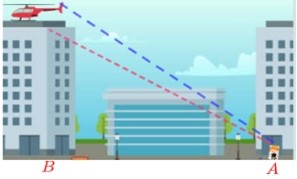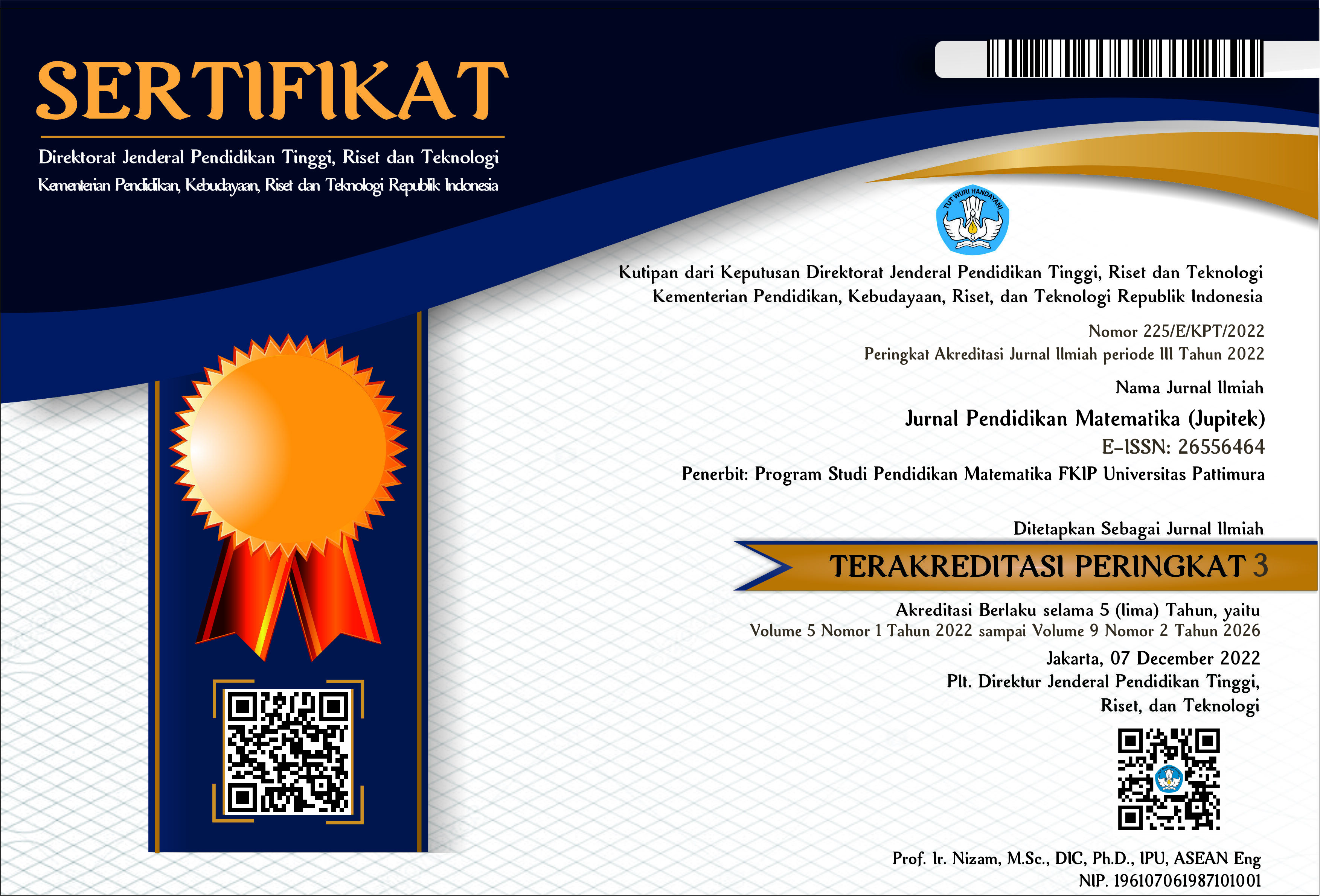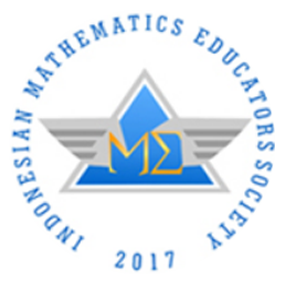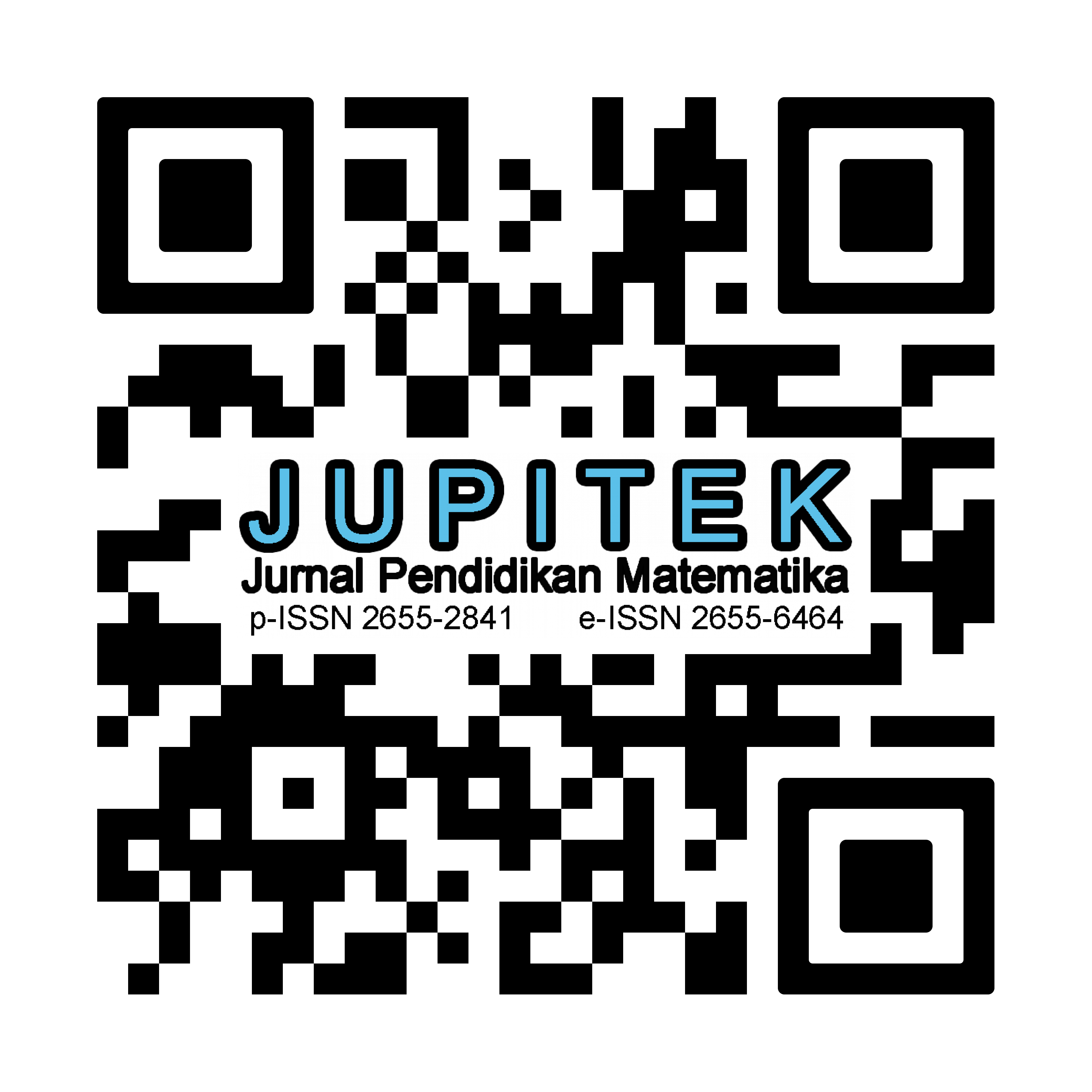ANALYSIS OF PROBLEM SOLVING SKILLS OF X GRADE STUDENTS FOR TRIGONOMETRY MATERIAL AFTER EXPERIENCING LEARNING USING A REALISTIC MATHEMATICS APPROACH ASSISTED BY GEOGEBRA
Abstract
One of the abilities that students need to build when learning mathematics is problem solving ability, so that students can implement their mathematical knowledge. From the results of student tests in the previous year and exploring the problem, researchers found that the problem solving ability of students faced for Trigonometry material is analyzing problems, organizing ideas and solving problems. The purpose of this study is to describe how students' problem solving skills after experiencing learning with the Realistic Mathematics Education Approach (PMR) for Trigonometric Comparison material assisted by Geogebra. The research subjects were 31 grade X students in one of the private high schools in Bekasi city in 2024/2025. The data collection methods used were field notes, written tests, and interviews. The instrument validation technique used expert validation techniques, while to validate the data, triangulation techniques were used. The research results from the written test are as follows: (a) the most difficulties found for problems 1 and 2 were executing the plan to get a solution, and looking back at the solution process; (b) the most difficulties found for problem 3 were making a plan, executing the plan, and looking back at the solution process. From the interviews with five students, it was found that the most experienced difficulties were making a plan, carrying out the plan, and reviewing the solution process; (b) the most experienced difficulties for problem 3 were making a plan, carrying out the plan, and reviewing the solution process
Downloads
References
Agusta, E. S. (2020). Peningkatan Kemampuan Matematis Siswa melalui Pendekatan Pendidikan Matematika Realistik. Algoritma: Journal of Mathematics Education, 2(2), 145-165. 10.15408/ajme.v2i2.17819
Agustina & Imami (2022). Analisis Kemampuan Pemecahan Masalah Matematis Siswa Kelas X Dalam Menyelesaikan Soal Pisa Berdasarkan Langkah Polya. EduMatSains : Jurnal Pendidikan, Matematika Dan Sains, 7(1), 39–50. https://doi.org/10.33541/edumatsains.v7i1.3852
Arikunto, S. (2016). Dasar-Dasar Evaluasi Pendidikan. Jakarta : PT Bumi Aksara
Dwita Imannia, Jumroh, & Destiniar. (2022). Kemampuan Pemecahan Masalah Matematis Siswa Pada Materi Program Linear. Inomatika, 4(1), 19–30. https://doi.org/10.35438/inomatika.v4i1.279
Hadi, S., & Radiyatul, R. (2014). Metode Pemecahan Masalah Menurut Polya untuk Mengembangkan Kemampuan Siswa dalam Pemecahan Masalah Matematis di Sekolah Menengah Pertama. EDU-MAT: Jurnal Pendidikan Matematika, 2(1).
Magdalena , I., Kurniawan, I., Pratiwi, A. D., Fitriah, H., Firlyansyah, H., & Yuliyani, T. (2022). Efektifitas Pendekatan Matematika Realistik terhadap Keterampilan Berpikir Kritis Siswa SD. Anwarul, 2(6), 427–435. https://doi.org/10.58578/anwarul.v2i6.693
Mayratih, G. E., Leton, S. I., & Uskono, I. V. (2019). Pengaruh Disposisi Matematis Terhadap Kemampuan Pemecahan Masalah Matematis Siswa. Asimtot : Jurnal Kependidikan Matematika, 1(1), 41–49. https://doi.org/10.30822/asimtot.v1i1.97
Nursyahidah , F., Saputro, B. A., Albab, I. U., & Aisyah, F. (2020). Pengembangan Learning Trajectory Based Instruction Materi Kerucut Menggunakan Konteks Megono Gunungan. Mosharafa: Jurnal Pendidikan Matematika, 9(1), 47-58. https://doi.org/10.31980/mosharafa.v9i1.591
Rahman & Nur (2021). Analisis kesalahan siswa menyelesaikan soal pemecahan masalah polya. JPMI (Jurnal Pembelajaran Matematika Inovatif), 4(6), 1413-1422. https://doi.org/10.22460/jpmi.v4i6.p%25p
Rahman, Z. H., & Setyaningsih, R. (2022). Meningkatkan Kemampuan Pemecahan Masalah Siswa Melalui Pendekatan Realistic Mathematics Education. AKSIOMA: Jurnal Program Studi Pendidikan Matematika, 11(2), 1620. https://doi.org/10.24127/ajpm.v11i2.5139
Ritonga, M. W., Ritonga, I., & Sangkot. (2021). Pengembangan Model Pembelajaran RME (Realistic Mathematics Education) Berbantuan Geogebra Untuk Meningkatkan Kemampuan Pemahaman Konsep Matematis Siswa. Jurnal Pendidikan Matematika, 2(2), 5–11.
Septina, N., Farida, F., & Komarudin, K. (2018). Pengembangan Lembar Kerja Siswa dengan Pendekatan Saintifik Berbasis Kemampuan Pemecahan Masalah. Jurnal Tatsqif, 16(2), 160-171. https://doi.org/10.20414/jtq.v16i2.200
Sibarani, G. (2022). Analisis Kesulitan Komunikasi Matematis Dan Pemecahan Masalah Matematika Siswa Dalam Penerapan Pendekatan Pembelajaran Matematika Realistik Di Kelas X SMA Swasta Sultan Iskandar Muda Medan. UNIMED.
Trionanda, S. (2022, August). Analisis Kesiapan dan Pelaksanaan Pembelajaran Matematika Jarak Jauh Berdasarkan Profil TPACK di SD Katolik Tanjungpinang Tahun Ajaran 2020/2021. In Prosiding Seminar Nasional Matematika dan Pendidikan Matematika (Vol. 6, pp. 69-76).
Wati, A. R., Kurniasih, K., & Iriawan, S. B. (2021). Penerapan Pendekatan PMR untuk Meningkatkan Pemahaman Konsep Matematis Siswa Kelas I SD. Jurnal pendidikan guru sekolah dasar, 6(2), 14-23. 10.15408/ajme.v2i2.17819

Copyright (c) 2025 Evi Ervera Malau, Hongki Julie

This work is licensed under a Creative Commons Attribution-NonCommercial-ShareAlike 4.0 International License.
License and Copyright Agreement
By submitting a manuscript to Jurnal Pendidikan Matematika (JUPITEK), the author(s) certify and agree to the following terms:
- Originality and Authority: The submitting author is authorized by all co-authors to enter into this agreement. The manuscript describes original work that has not been published previously in a peer-reviewed journal, nor is it under consideration for publication elsewhere.
- Approval: Its publication has been approved by all author(s) and by the responsible authorities of the institutions where the work was carried out.
- Rights: The authors secure the right to reproduce any material that has already been published or copyrighted elsewhere.
- Licensing and Copyright: Authors retain the copyright to their work.
- License Grant: The authors grant Jurnal Pendidikan Matematika (JUPITEK) the right of first publication, with the work simultaneously licensed under the Creative Commons Attribution-NonCommercial-ShareAlike 4.0 International (CC BY-NC-SA 4.0).
- Self-Archiving: Authors are permitted and encouraged to deposit the published version of their article in institutional repositories, on their personal websites, and other academic platforms, with proper acknowledgment of its initial publication in Jurnal Pendidikan Matematika (JUPITEK).





.png)


